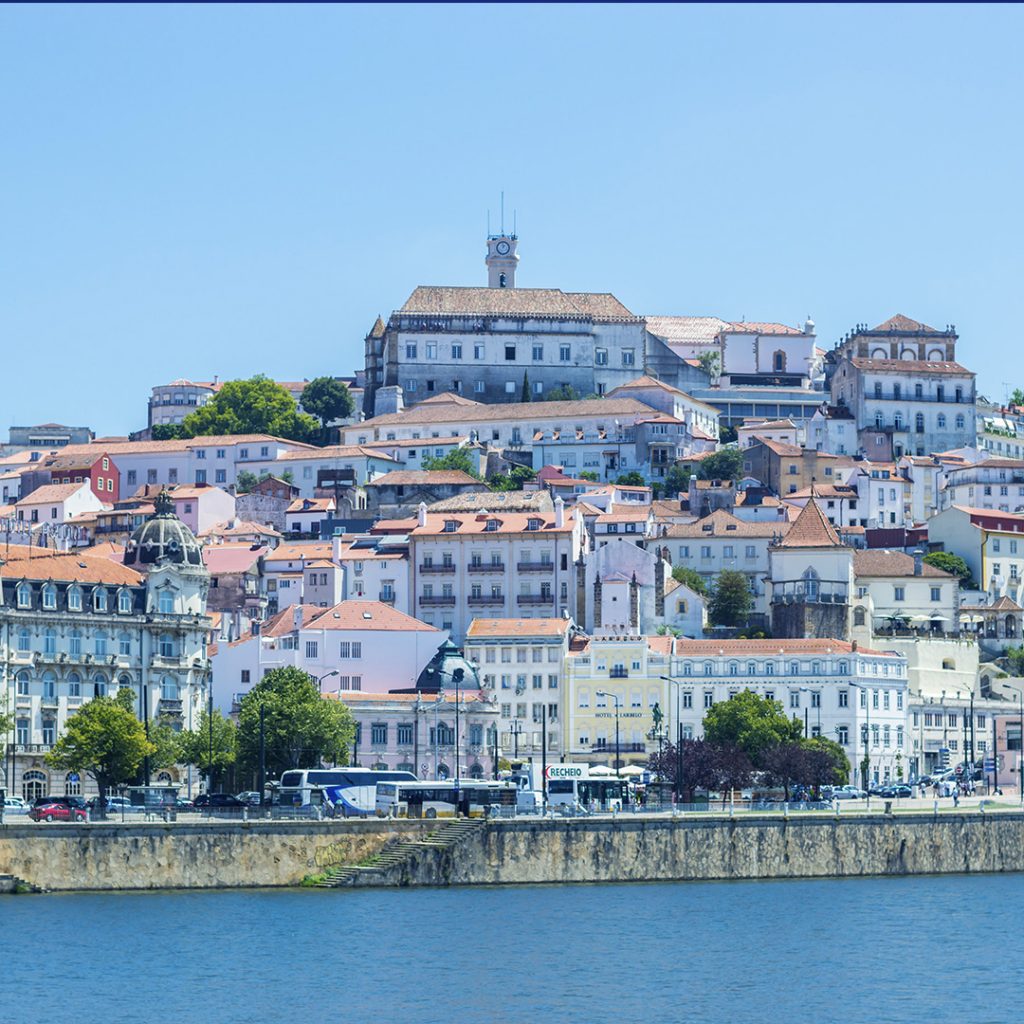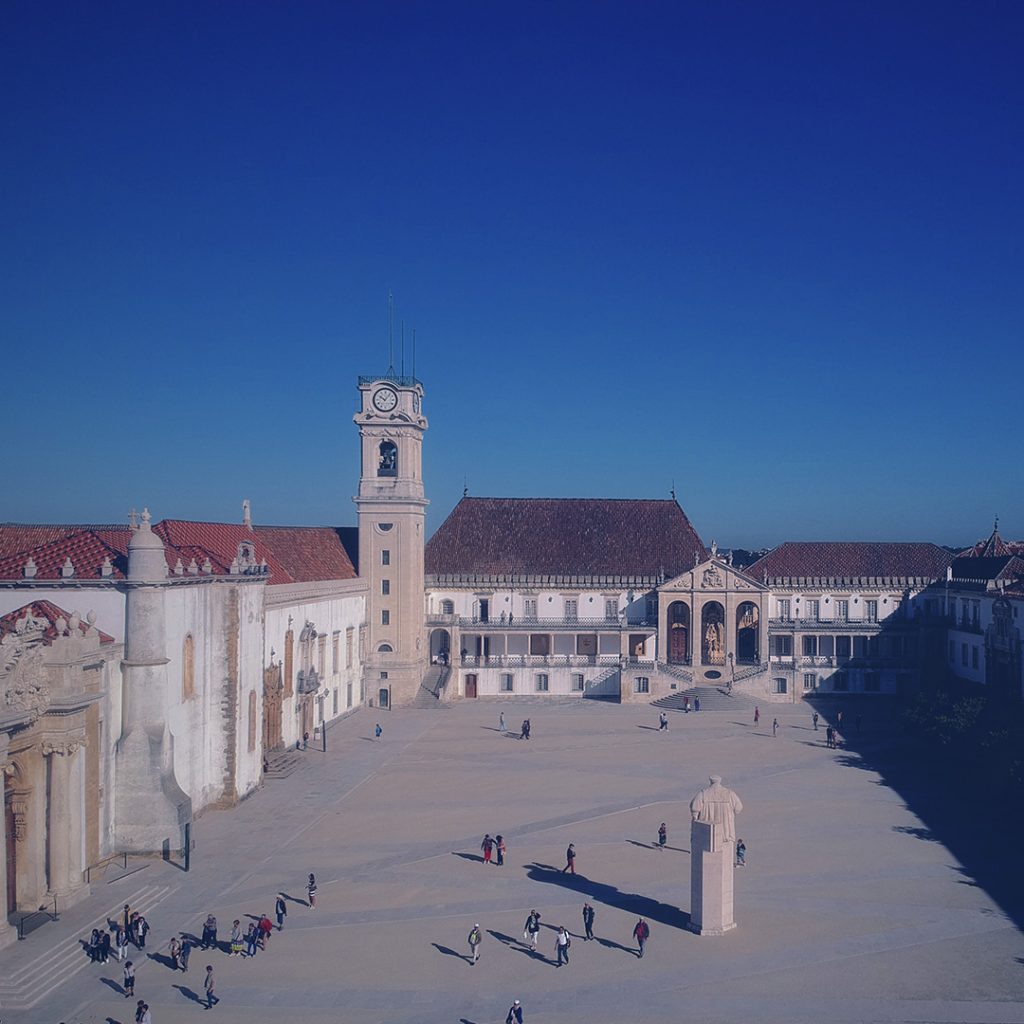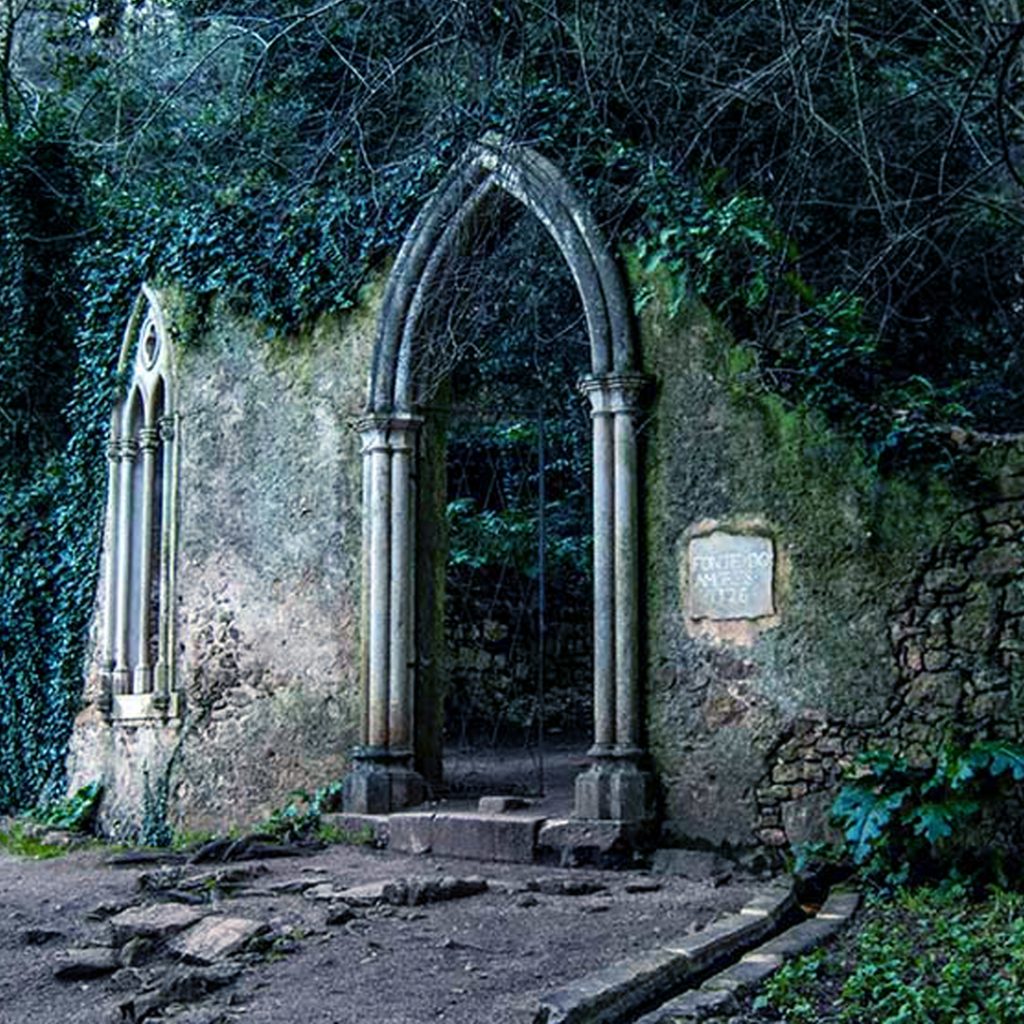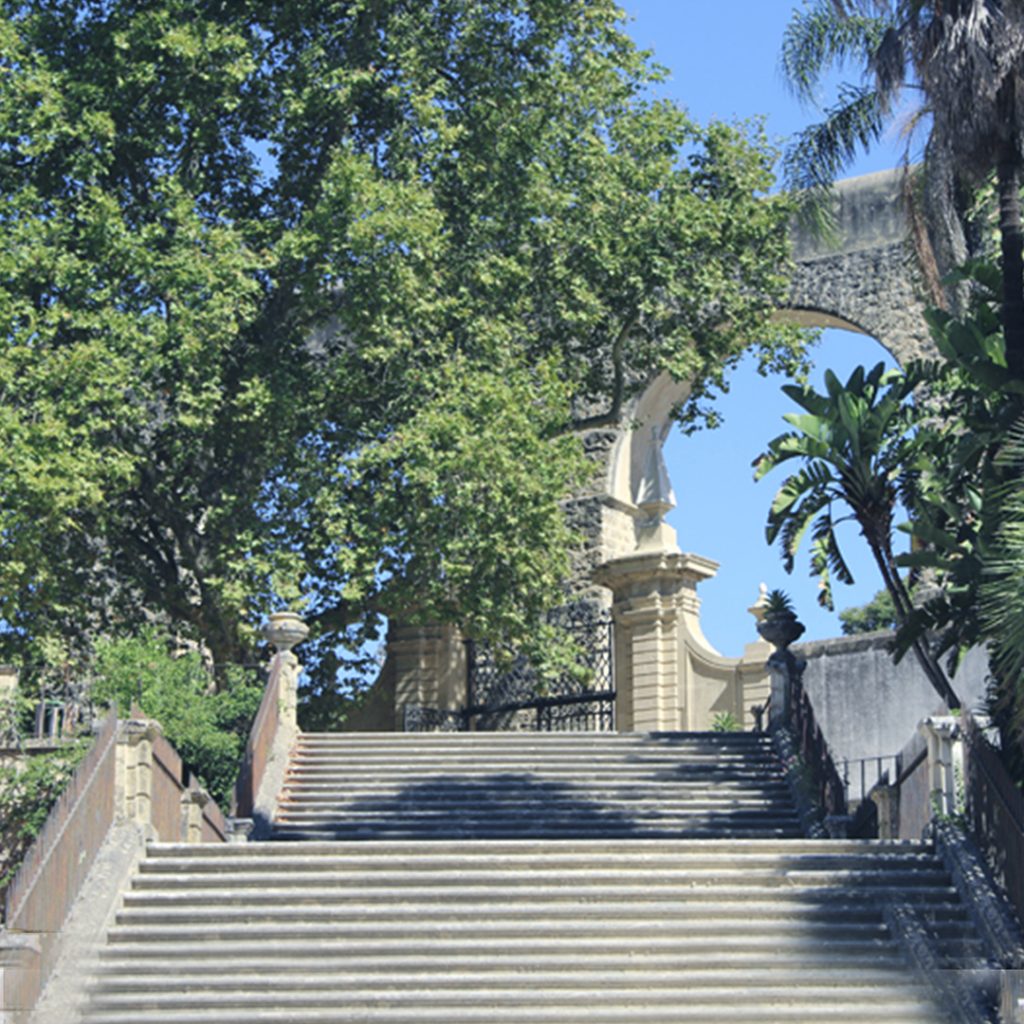“Coimbra é uma lição, de sonho e tradição”, which means Coimbra is a lesson of dream and tradition, is a verse from a song sang by Amália Rodrigues, the greatest portuguese Fado singer.

Coimbra, a city steeped in history, was once inhabited by both the Romans and the Arabs. Notably, it is the birthplace of D. Afonso Henriques, the first king of Portugal. Perched at one of its highest points lies the oldest college in the country. Additionally, this city is gracefully embraced by the Mondego River and has even played host to a love story reminiscent of Shakespearean drama. Coimbra has been designated as a UNESCO World Heritage site since 1994. In light of its rich heritage and significance, we’ve curated a list of the top 5 must-visit places in Coimbra.
1. The University of Coimbra
Established in 1290, the University of Coimbra initially commenced its operations in Lisbon, eventually settling permanently in Coimbra in 1537. Upon entering through the Porta Férrea (iron gate), one is greeted by the Paço das Escolas (School Hall), which forms part of the architectural complex that has accommodated the colleges since the 16th century. This space, prior to becoming part of the university, served as the inaugural Royal Palace of Portugal, where the country’s first monarchs were born and resided.
Among the must-see highlights for any visitor are the Joanina Library, the São Miguel Chapel, the University Tower, and the main building, housing the Via Latina (a lengthy balcony) and the Sala dos Capelos (Chapel Room). It’s essential to take note of the visiting hours for certain facilities to make the most of your visit and enjoy this must-see place in Coimbra.
Address: Paço das Escolas, Coimbra
Open 24 hours

2. Another Must-See Place in Coimbra is The Monastery of Santa Cruz
The Monastery, which offers free entry, is situated in the must-see downtown Coimbra and traces its origins back to 1131 when it was founded by the Order of Saint Augustine.
One of the primary attractions within the Monastery complex is the Church of Santa Cruz, the final resting place of D. Afonso Henriques, the first king of Portugal. Moving beyond the church, tucked away in the rear section of the Monastery, you’ll discover the Manga Garden, also recognized as the Cloister of Manga, which hails from the 16th century. Remarkably, although it now stands independently, this charming garden was originally an integral part of the Monastery.
Address: Praça 8 de Maio, Coimbra
Free Entry
Monday to Friday from 09 AM to 05 PM, Saturday from 09 AM to 12:30 PM and 02 PM to 05 PM, Sunday from 04 PM to 5:30 PM
3. Quinta das Lágrimas, the Most Important Place to Visit in Coimbra
Nestled on the left bank of the Mondego River, Quinta das Lágrimas occupies a sprawling expanse of land, at its heart standing a 19th-century palace that has been transformed into a luxurious hotel. Encompassed by its grounds, the gardens of this estate have been repositories of memories since the 14th century, chiefly due to a captivating love story that has spawned countless legends.
This particular tale can be hailed as one of Portugal’s most renowned love stories, a saga unfolded between Prince D. Pedro (who would later become Pedro I of Portugal) and the Castilian noblewoman D. Inês de Castro, inspiring a myriad of artistic works across the ages.
According to the cherished legend, the must-see gardens of Quinta das Lágrimas bore witness to the romantic rendezvous of the two lovers, where moments of both elation and tragedy played out. Within the confines of Quinta das Lágrimas, you will encounter the Fountain of Loves (Fonte dos Amores) and the Fountain of Tears (Fonte das Lágrimas).
It is whispered that the Fonte dos Amores, enveloped by the walls of the Medieval Garden, served as the rendezvous point where D. Inês would receive the wooden boats bearing Pedro’s heartfelt missives of love. However, it is also whispered that the Fonte das Lágrimas, bearing testament to D. Inês’ tears of anguish, originated from the profound sorrow of this tragic tale. It is said that the blood spilled during this poignant narrative flowed and remains eternally marked, staining the mosses a haunting shade of crimson to this very day.
The visit costs 2 €.
Address: Rua José Vilarinho Raposo 1, Coimbra
Tuesday to Sunday from 10 AM to 07 PM

4. Botanical Garden of the University of Coimbra
Dating back to the 18th century, this garden, inaugurated by none other than the Marquis of Pombal, offers a delightful opportunity for a leisurely stroll. Being a must-see place in Coimbra, the garden encompasses various charming sections, spanning across 13 hectares.
As you meander through, you’ll find yourself on the enchanting Alameda das Tílias, passing through the graceful Estufa Grande and the captivating Estufa Fria. Continuing your exploration, you’ll come across the Fontanário and the tropical oasis known as Recanto Tropical, where an array of palm tree species flourishes. All of these elements combine to create a harmonious and expansive green haven for visitors to enjoy.
Admission is for free.
Address: Calçada Martim de Freitas s/n, Coimbra
Open every day from 09 AM to 05:30 PM

5. Santa Clara-a-Velha Monastery
Originally founded at the close of the 13th century in 1283 by a noblewoman, the Monastery saw a significant re-founding in the 14th century, precisely in 1314. This re-founding was spearheaded by Isabel de Aragão, renowned as Queen Santa Isabel. Queen Santa Isabel, following the passing of her husband, King D. Dinis, explicitly expressed her heartfelt wish to be laid to rest within the Monastery’s sacred precincts.
The Must-See Church of Coimbra
Within the ruins of Santa Clara-a-Velha in Coimbra, the centerpiece undoubtedly remains the magnificent church, characterized by its distinctive features. Adjacent to this ecclesiastical marvel stands a cloister of monumental proportions, adorning the site and earning the distinction of being the largest Gothic cloister ever identified in Portugal.
Where Inês de Castro Met her End
Adjacent to the Monastery’s perimeter, an elegant palace was meticulously erected, personally chosen as the residence by Queen Isabel herself. Remarkably, it was within the hallowed walls of this palace that the ill-fated D. Inês de Castro met her tragic end, ruthlessly orchestrated by the decree of D. Afonso IV.
The Proximity to The River Mondego
The site’s immediate proximity to the river played an integral role in its selection as a prime location. Nevertheless, this close proximity has left an indelible mark on the Monastery’s history, extending from its very inception to the present day. On one hand, the presence of water held immense significance for the daily life of the Monastery’s inhabitants. Yet, on the other hand, the cyclic inundations of the Mondego River proved to be a perpetual challenge, rendering habitation by the monastic community increasingly untenable. Consequently, this led to the monks’ definitive relocation to a new convent known as Santa Clara-a-Nova Monastery, strategically situated at Monte da Esperança. This decisive move was realized in the year 1677, marking a pivotal chapter in the Monastery’s enduring legacy.
Entrance to the monastery costs €4.
Address: Rua das Parreiras, Coimbra
Tuesday to Sunday from 09 AM to 07 PM
Now it’s time to walk the streets of Coimbra and discover these places and others in the city. Don’t forget to tag @inlifehousing when following our tips 😉.
Are you looking for accommodation in Coimbra? We have verified rooms, apartments and other accommodations to rent in Coimbra. Book your new home away from home now at Inlife!


